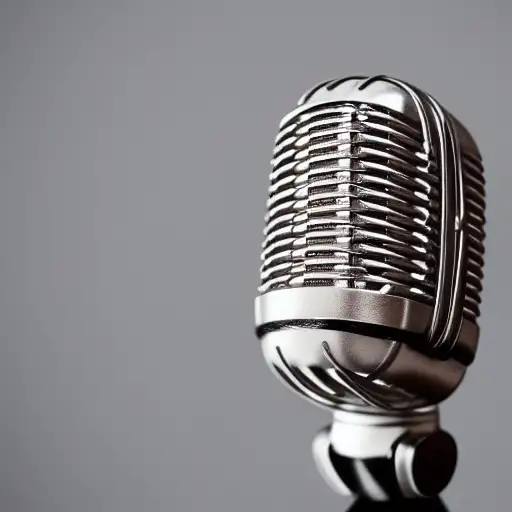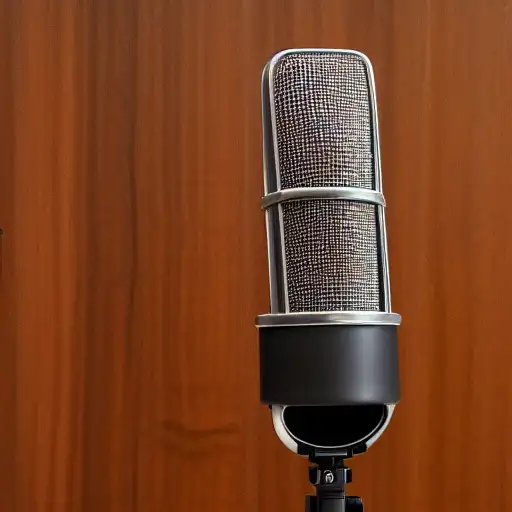Top 5 Microphones That Indie Artists Must Own
Checkout our buyers guide for the top microphones indie artists should look out for.
It's no secret that the quality of your microphone can make or break your recording. A good microphone will give you clear, crisp vocals or instrumentals. In contrast, a bad microphone will result in muddy, distorted sounds. If you're an indie artist who wants to record high-quality music, you need to invest in one of the best microphones on the market.
The top 5 microphones that Indie artists must own include:
- SM7B
- SM58
- Rode NTK
- Audio-Technica AT2020
- Rode NT1-A
This blog post will discuss the five best microphones for indie artists and why they are so beneficial. We will also list the pros and cons of each microphone so that you can make an informed decision before purchasing one.
Top 5 Microphones Recommended For Indie Artists
1. Most Popular Indie Microphone: Shure SM7B
The Shure SM7B is one of the most popular and well-reviewed microphones for indie artists. It features a flat, wide frequency response ideal for recording vocals or instruments. It has built-in pop filters to reduce plosive sounds. Additionally, the SM7B is very durable and requires little to no maintenance, making it an excellent choice for artists on the go.
Pros
- Flat, wide frequency response for clear vocals and instruments
- Built-in pop filters to reduce plosive sounds
- Durable constructionCons:-Relatively expensive compared to other microphones
Cons
- Not ideal for recording in large, noisy spaces
- It may require some additional adjustments to get the best sound
2. Best Vocal Indie Microphone: SM58
Another great option is the SM58, which is another Shure microphone that is ideal for recording vocals. It is an industry standard for live performances. Its cardioid pickup pattern reduces feedback and ensures a clean, rich sound. With its built-in shock mount, the SM58 is also very durable and can withstand being dropped or knocked around.
Pros
- Cardioid pickup pattern that reduces feedback and produces clean sound
- Built-in shock mount makes it highly durable
- Widely used by musicians in live settings
Cons
- Not as good for recording instruments, especially high-end instruments like guitars and basses
- It doesn't produce the best sound quality in large, noisy spaces
3. Best Live Performance Mic: Rode NTK
The Rode NTK is another popular choice among indie artists, especially those looking for a microphone with a rich, warm sound. This tube-powered condenser mic is excellent for recording vocals and guitar and bass amplifiers. It also features high-pass filtering to reduce low-end rumble and handling noise, making it an ideal choice for live performances.
Pros
- Rich, warm sound that is ideal for vocals, guitars, and basses
- High-pass filtering reduces low-end rumble and handling noise
- Easy to use and requires little to no additional adjustments or settings
Cons
- Relatively expensive compared to other microphones on the market, requires an external power supply (which is not included)
4. Best Budget-Friendly Mic: Audio-Technica AT2020
The Audio-Technica AT2020 is another popular choice for indie artists thanks to its versatility and affordability. This cardioid condenser microphone is excellent for recording vocals or acoustic instruments. It also features a built-in headphone jack for real-time monitoring. Additionally, the AT2020 is highly durable and requires very little maintenance, making it an excellent choice for artists on the go.
Pros
- The cardioid pickup pattern reduces feedback and produces a clean sound
- Built-in headphone jack for real-time monitoring of recordings
- Durable construction and requires very little maintenance
Cons
- Not optimal for recording louder instruments like drums or electric guitars
- It doesn't have as warm of a sound as other mics
5. Best Versatile Microphone: Rode NT1-A
Finally, the Rode NT1-A is a great option for indie artists who want to record high-quality vocals at home. This large diaphragm condenser microphone features a cardioid polar pattern that helps isolate your sound and requires a minimal gain to achieve high sensitivity levels. Overall, the Rode NT1-A is an excellent choice for artists who want a versatile and affordable microphone for home recording.
Pros
- Wide frequency range and high sensitivity
- The cardioid polar pattern helps isolate sound
- Durable construction and requires little maintenance
Cons
- It doesn't produce the best sound quality in large, noisy spaces
- It may require some additional adjustments and settings to get the perfect sound

The mic you use can make or break a well written and performed song. If you are recording at a home studio make sure to invest in a great microphone.
Indie Artists Microphone Buying Guide
Before going out and buying a mic, it’s crucial to understand how microphones differ. Below, we’ve crafted a quick buying guide that can help explain what features you need to keep an eye out for.
Choosing between Dynamic, Condenser, and Ribbon Mics
When choosing a microphone for recording your music, many options are available. The most common microphones are dynamic, condenser, and ribbon mics. Each of these microphones has its own advantages and disadvantages, so you will need to research and consider your own needs and preferences before making a decision.
One of the main differences between these microphones is how they capture sound. Dynamic mics, like the SM58 and SM7B, use a coil that remains stationary while the diaphragm moves in response to sound waves.
This results in a rich, warm sound ideal for recording vocals or instruments. Condenser mics, like the AT2020 and NTK, use a charged diaphragm that moves when sound waves hit it. This creates a more transparent recording with greater detail and clarity.
Understanding Polar Patterns
Another important consideration is the microphone's polar pattern, which determines how easily you can pick up sound from different angles. For example, a cardioid microphone will have a more focused pickup pattern, making it ideal for recording vocals or instruments in a small room. In contrast, a large-diaphragm condenser microphone will provide a more natural sound. However, it may pick up too much ambient noise for recording in a studio.
Microphones For Indie Artists FAQs
What microphone do most artists use?
There is no definitive answer to this question, as different artists will have different preferences and needs. That being said, a popular choice among indie artists is the SM58. This dynamic microphone is widely used in live performances. Other popular options include the Rode NTK and AT2020 condenser mics and the Rode NT1-A large-diaphragm condenser mic.
What is the best microphone for making music?
Again, there is no definitive answer to this question. Some artists prefer dynamic mics for their warm, rich sound, while others opt for condenser mics for their clarity and detail. Ultimately, the best microphone for making music will depend on your preferences, budget, and recording environment.
How do I choose the right microphone for my needs?
To choose the right microphone for your needs, you must consider several factors, including the polar pattern, frequency response, and budget. Some additional considerations include the type of recording environment (studio vs. home studio, for example) and the intended use of the microphone (recording vocals vs. recording instruments).
Microphone Buying Guide Verdict
Whether you're a seasoned musician or just starting, it's crucial to have the right tools for recording your music. If you're looking for a versatile, affordable microphone for your home studio or live performances, the A-T T1-A dynamic mic is a great option. With its cardioid polar pattern, detailed frequency response, and durable construction, this mic is perfect for recording vocals or instruments.
However, you're looking for a more natural sound with greater clarity. In that case, a large-diaphragm condenser mic like the Rode NT1-A may be a better choice. With so many different options available, it's essential to consider your own needs and preferences when choosing a microphone for making music.
So do your research, try out a few different mics, and find the one that's right for you!
Blog Article Tags
microphones guide shop recording audio equipment studio micsMore Articles
From Hobby to Business: How to Make Money From Listening To Music - Turn listening to music is a hobby into listening to music gets you paid.
How to Make Music: A Beginner’s Guide - Learn simple to follow step-by-step tips on how to start creating your own songs & release them..
Get That Professional Sound: A Step-by-Step Guide to Demo Recording - Learn how to create a demo that gets the attention of music industry professionals.
5 Tips for Booking a Recording Studio at a Good Price - If you're looking to book studio time at a good price, check out these solid tips.
How To Build Your Home Recording Studio For Under $600 - Learn how to affordably build your home recording studio with ease.


